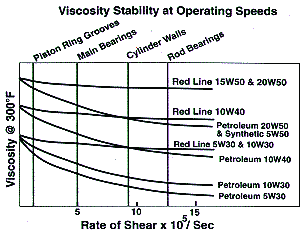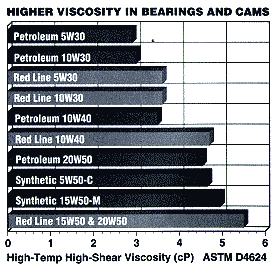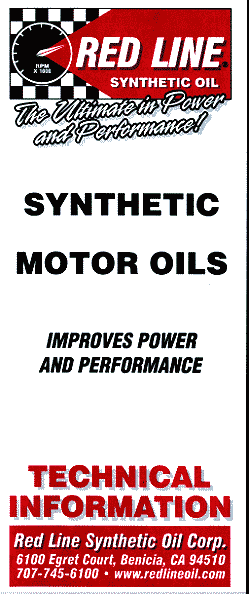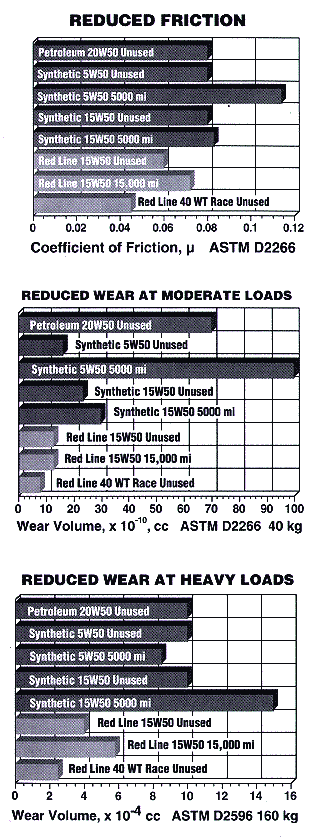

 RED LINE SYNTHETIC MOTOR OILS are designed to provide the highest degree of protection and cleanliness for your engine. We use the most stable synthetic components available and formulate our products for wear protection across a wide range of operating conditions. Red Line lubricants contain polyol ester basestocks, the only lubricants which can withstand the tremendous heat of modern jet engines, which makes our motor oil a necessity to properly lubricate a turbocharger or hot-running engine. The synthetic basestocks have a natural multigrade property, which means that large amounts of unstable polymeric thickeners are not required to manufacture our multigrades. Red Line Synthetic Motor Oils will provide better protection than a petroleum oil of the next higher viscosity grade under high shear conditions.
RED LINE SYNTHETIC MOTOR OILS are designed to provide the highest degree of protection and cleanliness for your engine. We use the most stable synthetic components available and formulate our products for wear protection across a wide range of operating conditions. Red Line lubricants contain polyol ester basestocks, the only lubricants which can withstand the tremendous heat of modern jet engines, which makes our motor oil a necessity to properly lubricate a turbocharger or hot-running engine. The synthetic basestocks have a natural multigrade property, which means that large amounts of unstable polymeric thickeners are not required to manufacture our multigrades. Red Line Synthetic Motor Oils will provide better protection than a petroleum oil of the next higher viscosity grade under high shear conditions.
 |
 |
|
| Figure 1: Red Line 10W40 provides greater bearing protection than petroleum 20W50s. Note how even high-quality petroleums will lose a significant portion of their viscosity protection when exposed to the high shear forces in bearings and on cylinder walls. | Figure 2: Red Line provides significantly greater viscosity than petroleums under high-speed and high temperature conditions. Red Line provides a greater viscosity than the next higher petroleum grade. |

| Back | Home | Forward |